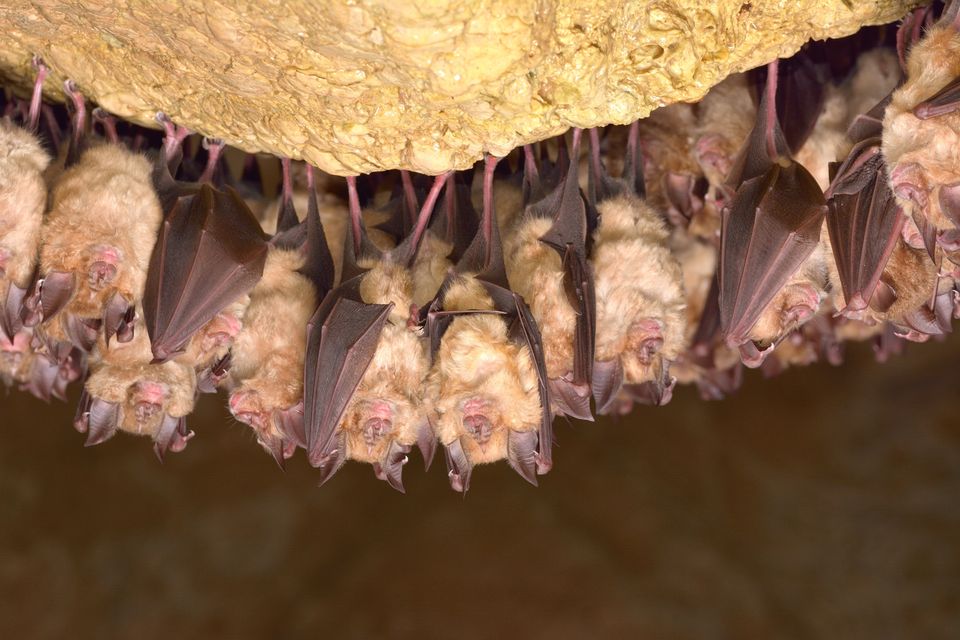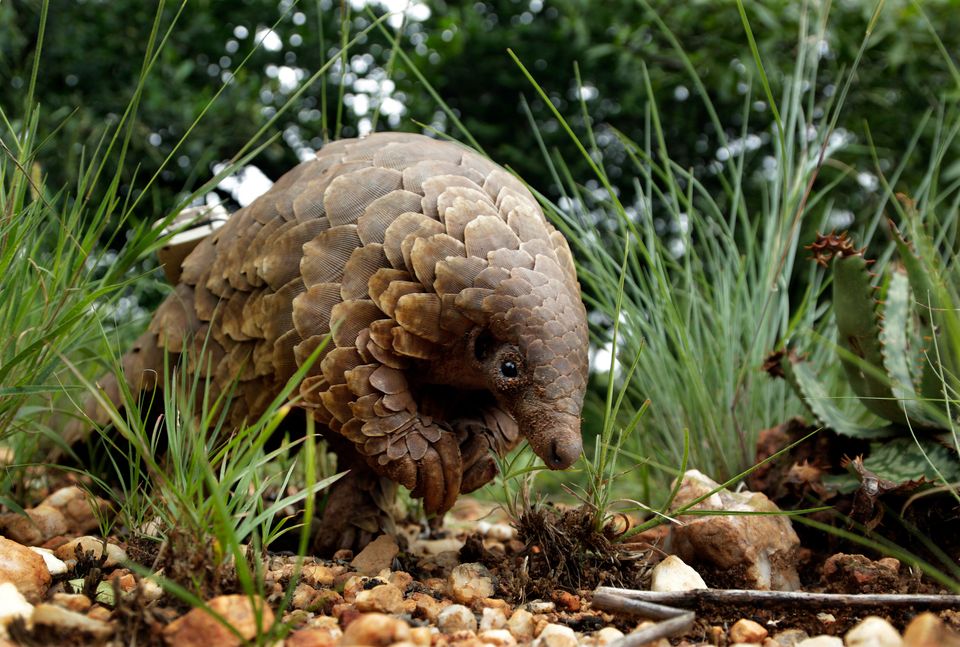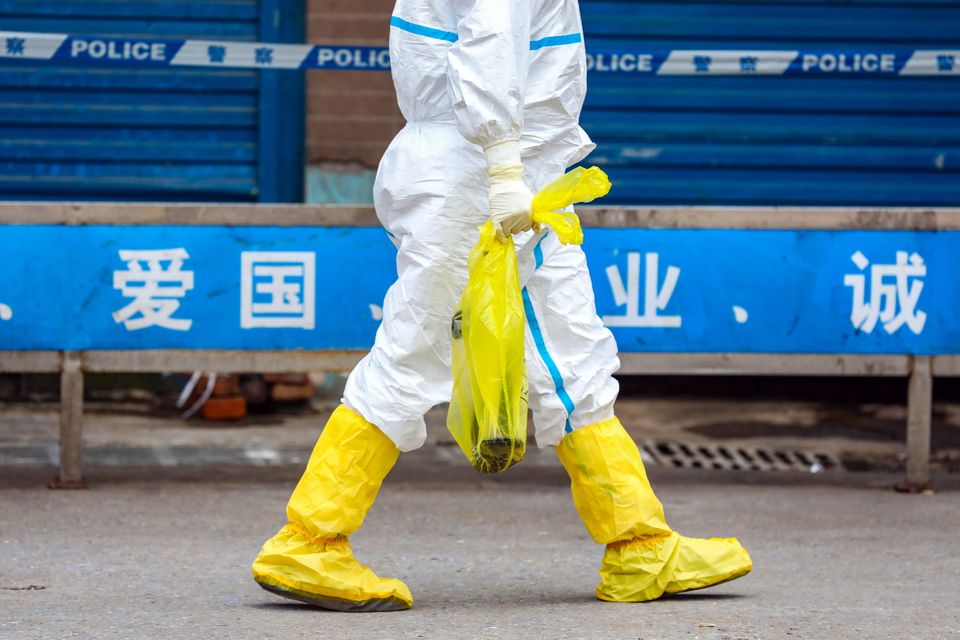Get the latest on coronavirus. Sign up to the Daily Brief for news, explainers, how-tos, opinion and more.
From disinfectants to warm weather, Donald Trump has repeatedly lobbed curveballs into scientific conversations about coronavirus during his daily White House press conferences.
Faced with a startling death toll in his own country, the US president has tried to direct attention to China – the initial epicentre of the outbreak – and its handling of the virus, including claims it could have escaped from a laboratory in Wuhan.
On Thursday evening, speaking to reporters, he speculated about “whether they [scientists in a lab in Wuhan] made a mistake or whether it started off as a mistake and then they made another one – or did somebody do something on purpose?”
Hours earlier, Trump’s own intelligence officials had confirmed the virus had originated in China, with the director of National Intelligence stating: “The intelligence community [the IC] also concurs with the wide scientific consensus that the Covid-19 virus was not man-made or genetically modified.”
Against a backdrop of the president’s repeated suggestions that the virus could have originated from a laboratory setting, the statement added: “The IC will continue to rigorously examine emerging information and intelligence to determine whether the outbreak began through contact with infected animals or if it was the result of an accident at a laboratory in Wuhan.”
But that theory is just a theory. Scientists may not fully understand the nature of the global outbreak of Covid-19, the illness caused by the virus, but there are plenty of ways in which it could have originated.
Here’s what we know now.

Scientists largely agree that the new coronavirus came from bats
Researchers already know that the new virus, SARS-CoV2, has a genetic makeup very similar to those of other known bat viruses ― namely the ones that caused Sars and Mers, two deadly coronaviruses that began spreading in 2002 and 2012 respectively.
Sars, which stands for severe acute respiratory syndrome, was first reported in China, while Mers, or Middle East respiratory syndrome, was first reported in Saudi Arabia.
A Febuary 3 paper published in the journal Nature concluded that the new virus is “96% identical at the whole-genome level to a bat coronavirus,” based on its genome sequence.
Dr Chris Beyrer, an epidemiology professor at Johns Hopkins University, told HuffPost the virus’s natural origins were beyond dispute.
“Once we had the full genome sequence, it lines up so closely with Sars and with Mers there’s no – that is not in debate. This is a bat virus,” he said.
Bats are known for being natural reservoirs of many viruses. The new virus probably came from Chinese horseshoe bats, a small variety with a flattened, leaflike nose.
There is no evidence the virus was engineered in a lab
A widely cited March 17 paper in the journal Nature said it was “improbable” that the new virus had “emerged through laboratory manipulation of a related […] coronavirus.”
Dr Kristian Andersen, a professor of immunology and microbiology at Scripps Research and an author on the paper, also discouraged the idea that the virus had been man-made, saying in a statement: “We can firmly determine that SARS-CoV-2 originated through natural processes.”
To Dr Yvonne Maldonado, a professor of paediatrics and infectious diseases at Stanford University, the idea that this virus is a synthesised bioweapon amounts to nothing more than a silly conspiracy theory.
“The science shows that this came from animals,” she said.
Scientists at the California-based Scripps Research Institute looked at the genetic template for the spike proteins that protrude from the surface of the virus, which the virus uses to attach the outer walls of its host’s cells and then enter the cells.
Live Science reported that researchers analysed these spikes and compared SARS-CoV-2 to SARS-CoV (the virus that caused the original Sars outbreak), making changes to the genetic code that would result in Covid-19.
But in the computer simulations, the mutations in SARS-CoV-2 didn’t effectively bind the virus to human cells, posing the question: if scientists had developed Covid-19 on purpose, why would they choose a mutation that doesn’t work according to computer modelling?
Scientists therefore concluded that the novel coronavirus was very likely to have mutated organically, due to the fact it appears to have what would have been predicted by computers as an ineffective design. In other words, a manmade virus would have been more obviously geared on a microscopic level towards infecting human cells.

Experts theorise that it jumped from bats to an intermediary creature before infecting humans
A prevailing theory is that the virus made its way from bats to people via another animal, largely based on the earlier outbreaks of Sars and Mers.
The virus that caused the 2002-03 Sars panic is thought to have jumped from bats to civets – a catlike animal native to Asia and Africa – before jumping to humans. The virus that caused Mers likely jumped from bats to camels before infecting its first humans.
Researchers including a team studying the virus at the University of Michigan have suggested that the intermediary animal in the current pandemic might be the pangolin, an unusual mammal prized for its meat and its scales, which are used in some traditional Chinese medicine. Smugglers are widely known to trade the creatures despite a ban on trafficking in China and around the world.
But scientists are far from certain that pangolins were involved in the current crisis. One studycited by The Guardian looked at cell receptors that allow the virus to infect humans; pangolins were found to have similar receptors to humans’, but so did pigs, civets, cows, buffalo, goats, sheep and pigeons.
It’s also possible, although not as likely based on available evidence, that the virus jumped straight from bats to humans.
Chinese officials have said the virus likely began spreading to humans at a wildlife market in Wuhan
The Huanan Seafood Wholesale Market is a wildlife and seafood market in the industrial city of Wuhan that brings humans into close contact with all sorts of animals, which are in close contact with each other.
In addition to typical seafood options, it’s known to offer a wide array of live and butchered wild animals, including baby crocodiles and ostriches. Scientific American called such markets “perfect viral melting pots” in a recent feature on a renowned Chinese bat virus researcher.
“Typically, because the bats are the smallest animals, and they are airborne animals, their cages are typically above the others,” Beyrer said. As a result, urine and faeces from the bats can easily contaminate the other animals.
He added: “And the people are very important because the people who handle these animals, who slaughter and butcher them, are all the same people.”
A widely cited January 24 paper in the journal The Lancet said that of the first 41 Covid-19 patients, 27 of them – nearly two-thirds – had been exposed to that particular seafood market. The genetic material of the virus was also found at the market – more evidence that it provided a launchpad. From there, it continued to spread between people.
Given the potential of wildlife markets for spreading new diseases, the United Nations is calling on China to shutter them for good.
It’s worth noting that the term “wet market” has been widely used to describe the Huanan market, but most wet markets do not sell wild animals, which is why the term “wildlife market” is more accurate. Wet markets are named for the ice used to keep seafood and other items cool.

But there is also some reason to believe the market was not the only starting place, and the virus had begun circulating earlier
The seafood market scenario is not perfect.
The earliest known Covid-19 patient started showing symptoms in Wuhan on December 1, 2019, but he did not have any known connection to the market, according to the Lancet paper, which was authored by a large group of Chinese researchers.
“No epidemiological link was found between the first patient and later cases,” the paper noted.
And although the bulk of the first 41 patients had contact with the market, generally as workers there, 14 had no link to it.
One of the authors of the Lancet paper, Bin Cao, told Science magazine in a late January email: “Now it seems clear that [the] seafood market is not the only origin of the virus. But to be honest, we still do not know where the virus came from.”
China has also suppressed information on the virus that could provide clarity. Back in January, a doctor who tried sounding the alarm about an impending crisis was forced to sign a document admitting to spreading “rumours”. Others who spoke out in the beginning of the crisis have vanished. China withheld alarming data about infections among health care workers for more than a month, and excluded asymptomatic patients from its total infection tally.
Maldonado said her colleagues in Wuhan have mainly been focused on dealing with the clinical aspects of the crisis so far, and theorised that “the story will probably evolve over time”.
“Most of the early cases did come from that marketplace,” she said, but noted that “we don’t know [if] there may have been earlier cases” that came from elsewhere.
A theory exists that the virus came from a lab accident as researchers in Wuhan were studying bat coronaviruses…
US intelligence officials are looking into whether the current crisis was sparked by an accident at a lab where scientists study bat viruses.
“We are actively and vigorously tracking down every piece of information we get on this topic and we are writing frequently to update policymakers,” an intelligence official told Yahoo News, which noted that the intelligence community “has not come down on any one theory”.
A Washington Post article by columnist Josh Rogin described alarming warnings back in 2017 about conditions at Wuhan labs: “Two years before the novel coronavirus pandemic upended the world, US Embassy officials visited a Chinese research facility in the city of Wuhan several times and sent two official warnings back to Washington about inadequate safety at the lab, which was conducting risky studies on coronaviruses from bats
“The cables have fuelled discussions inside the US government about whether this or another Wuhan lab was the source of the virus – even though conclusive proof has yet to emerge.”
… but, right now, scientists think it’s pretty unlikely
First of all, the fact that bat viruses are being studied in China does not automatically mean the labs are up to something nefarious.
“There are a number of labs in the world that are studying coronaviruses and for which we should all be deeply grateful,” Beyrer said. “We know that there are many, many more [coronaviruses] in nature. Many of them are pathogenic for humans. They need to be studied.”
It may be technically possible for safety protocols to have broken down so badly that a new coronavirus broke free, Beyrer acknowledged, but there is no evidence that happened here. France released a statement to combat the idea “recently circulating in the United States press,” stating unequivocally that “there is to this day no factual evidence” supporting the theory the virus escaped from a lab.
It might take a while for scientists to be sure how and when the pandemic started, but the market seems to have played a large part in its widespread transmission.
There’s also the matter of the pangolin (or other intermediary animal).
“Nobody studying bat coronaviruses would keep pangolins in their lab,” Beyrer said. “They’re not a research animal. That’s further evidence that we need to keep focusing on the abattoir.”
It’s going to take a while to figure out how this virus evolved and why it’s so deadly
“That question may take several months or longer, as people will have to try to find more animals, and look for viruses, and sequence those viruses, and then understand how those genes and those viruses work, and how those are different from the genes in the human virus, and then try to understand how those create symptoms,” Maldonado said.
The current crisis may also prove to be a watershed moment for the global wildlife trade, which thrives on human desire to consume exotic game for food or medicine regardless of the potential cost.
Bats are known to carry many viruses that don’t cause them illness. But if they are coming into regular contact with humans and other animals that are not part of their natural habitat, that gives these viruses an opening.
Human activity has also forced different bat species to live much closer together than they otherwise would, allowing viruses that normally live in one species to spread to others.
“I think it’s really easy for us to forget that people are encroaching on animal habitats, and there may be consequences to that,” Maldonado said.